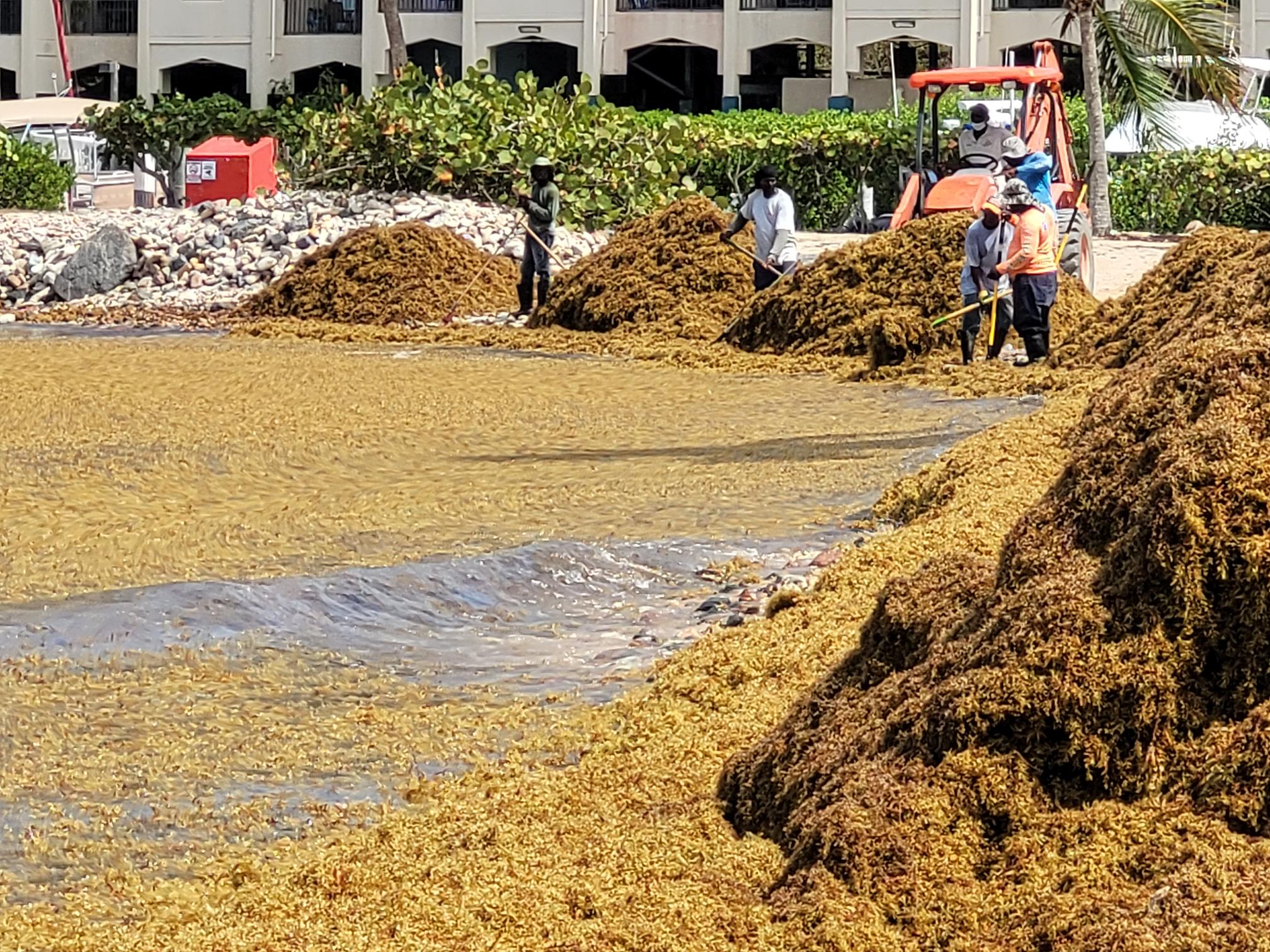
Sargassum, a macroalgae, has become an increased nuisance and hazard on beaches along the Florida and U.S. Caribbean territory beaches in recent years. A new project–funded by our Monitoring and Event Response for Harmful Algal Bloom (MERHAB) Research Program–will help will improve the effectiveness of existing NOAA and partner Sargassum detection and forecasting capabilities, facilitate a better understanding of biochemical impacts associated with inundation or beaching events, and foster the autonomous and routine delivery of timely and accurate Sargassum nowcasts, forecasts, and warnings. Learn more about this five-year project: https://coastalscience.noaa.gov/project/developing-an-operational-sargassum-hab-monitoring-and-forecasting-system-for-the-southeastern-u-s-and-u-s-caribbean/
Partners in the effort include University of South Florida; Florida Atlantic University; CARICOOS; U.S. Virgin Islands Department of Planning and Natural Resources, Division of Fish and Wildlife; NOAA
